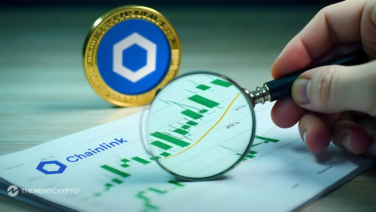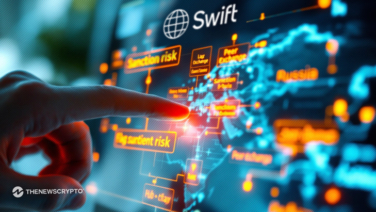NFTs, although a fairly recent development, have taken the world by storm over the past 12 months. While some people write NFTs off as a money scheme or as ridiculous, they’re certainly providing an interesting new avenue of expansion for art as a whole.
Digital art was once a severely undervalued commodity, made up of mostly commission artists working on individual projects. However, as NFTs have grown in popularity, digital artists can now create more comprehensive projects, selling their art in a variety of forms.
Perhaps the most famous of these NFT collections is the Bored Ape NFTs , all of which have now been sold for a collective value of over $1bn.
New platforms are springing up to accommodate NFTs, with recent developments providing new ways for artists to make a living selling or renting NFTs. In this article, we’ll be discussing the popularity of NFTs and pointing out ways that digital artists can turn their art into a profitable stream of income thanks to this new online craze.
Why are NFTs so popular?
There is more to the popularity of NFTs than just the fact of ownership. While most buyers enjoy NFTs simply because they can say that it’s theirs, being a system that’s run on blockchain has other main benefits.
One of the primary reasons that the NFT market has exploded so much over the past year is accessibility. While if you were to buy a real painting or artwork, you’d have to go to a gallery, maybe even an in-person auction, NFTs are completely online. Unsurprisingly for a digital asset, this means that it can be viewed at any time.
As the blockchain is an online system, anyone, anytime, can log onto a sales platform and get information about the NFTs currently being sold. This 24/7 approach has also allowed an international selection of buyers to take a look at the market. Instead of being based purely on geographical limits, one needs only to navigate to a marketplace’s website and hit the buy button.
While the reason people are buying almost certainly comes down to exclusivity and desire for possession, the accessibility of NFTs has skyrocketed the value of this market.
Why would artists want to turn to NFTs?
One fantastic advantage of the NFT marker is that it’s run on a decentralized network. What this means is that NFTs exist outside of centralized entities (like governments, large-scale corporations, or banks). Due to this, many artists that have found their work censored on other platforms can turn to NFT marketplaces to create freely.
One platform that offers these services is Creaton, a content-sharing platform that specializes in providing a space for artists to publish their content. Instead of subscription services like Patreon, which have a history of removing content they deem worthy of censorship, Creaton allows artists to freely create whatever they’d like.
If you’re looking for a platform where you can take artistic liberty to the max, then moving to a decentralized platform may be the right direction for you to take.
What are the benefits of NFTs?
Discussing NFTs in a more general sense, covering the whole market, there are a few central benefits of this mass movement to digital art. These are:
- Convenience and efficiency
- Diversification of investment
- Secure
Let’s break these down further.
Convenience and efficiency
Alongside the aforementioned accessibility benefits, the NFT market is also incredibly efficient. Physical assets are, due to their physical nature, weighted. If you were to buy a painting, you’d have to get it shipped (potentially across the world) to where you live.
Yet, with digital assets, everything is available instantly. Instead of waiting for something to ship to you or for a business to organize delivery to your home, you’ll get access to any NFT that you buy instantly.
The convenience of NFTs makes this asset even more attractive, with users being able to own and possess something they buy within the very second that they hit the ‘Buy’ button.
Diversification of Investment
The importance of diversification is a well-established rule in the world of investing. Considering that NFTs and digital art is a whole new industry altogether, they provide a unique opportunity of bringing a whole new segment to your portfolio.
While NFTs are still too young to have seen any studies about their investment worth, many people have turned to buying, holding, then reselling NFTs online. If you’re looking to diversify your portfolio, then putting some of your money into this digital asset could be a great idea.
Secure
Blockchain is an incredibly secure technology, providing an unalterable way of recording information. Due to this, when someone buys an NFT and the information of their ownership is placed on-chain, it’s almost impossible to hack or steal.
Ironically, even world-class museums have still seen robberies – some of which were successful in stealing priceless artifacts. However, with NFTs, the digitization of the asset provides a level of security.
This, alongside the foundations in blockchain, means that these investments are incredibly safe.
How can creators make a living with NFTs?
There are several ways that artists can make a living from NFT creation. As NFTs are a non-fungible asset (meaning they can’t technically be duplicated), the most straightforward way of making a profit is by selling ownership of an NFT.
This process is where you upload your artwork to an NFT marketplace. Doing this effectively ‘Mints’ the NFT, which means its data is now stored on the blockchain. The most popular NFT marketplace is OpenSea, which offers a great place to start for artists looking to sell their work online.
What about if I don’t want to sell my work?
First of all, we would remind you that just because you sell your artwork as an NFT doesn’t actually mean you lose the copyrights to that artwork. This means that you’ll be able to still have all the rights to your work, you’ll just essentially be selling the ‘Ownership’, which is written down in a ledge in the blockchain.
So, there really isn’t any harm in minting and selling your artwork on a platform. However, if you’re still not keen on this idea, there are other things you can turn to. One of these we briefly touched on earlier, with platforms like Creaton letting artists sell subscriptions to see their artwork.
Functioning similarly to a service like Patreon, Creaton allows users to upload their artwork onto a private channel. Users will then pay to see their channel, gaining access to all of their artwork on the platform. Unlike traditional monthly payment cycles, Creaton charges for time spent on a profile, further generating popular users even more money.
This new form of NFT marketing represents the sweet spot between selling and using an NFT marketplace. Instead of giving up the ownership of an NFT you’ve made, you’ll be able to rent out the time that people spend viewing them. It’s almost like a completely digital museum!
Final Thoughts
NFTs recently overtook ‘Cryptocurrency’ in terms of being one of the most popular search terms on Google. With facts like these and the undeniable money trail that’s following the NFT market, it’s hard to ignore this field.
Artists are making the most of NFTs, digitizing their art and flocking to marketplaces to mint. With this comes new ways for artists to make money, providing more predictable streams of income that were once associated with digital artists.
No matter your personal opinion around NFTs, it’s hard to overlook the impact they’ve had on the last 12 months.







